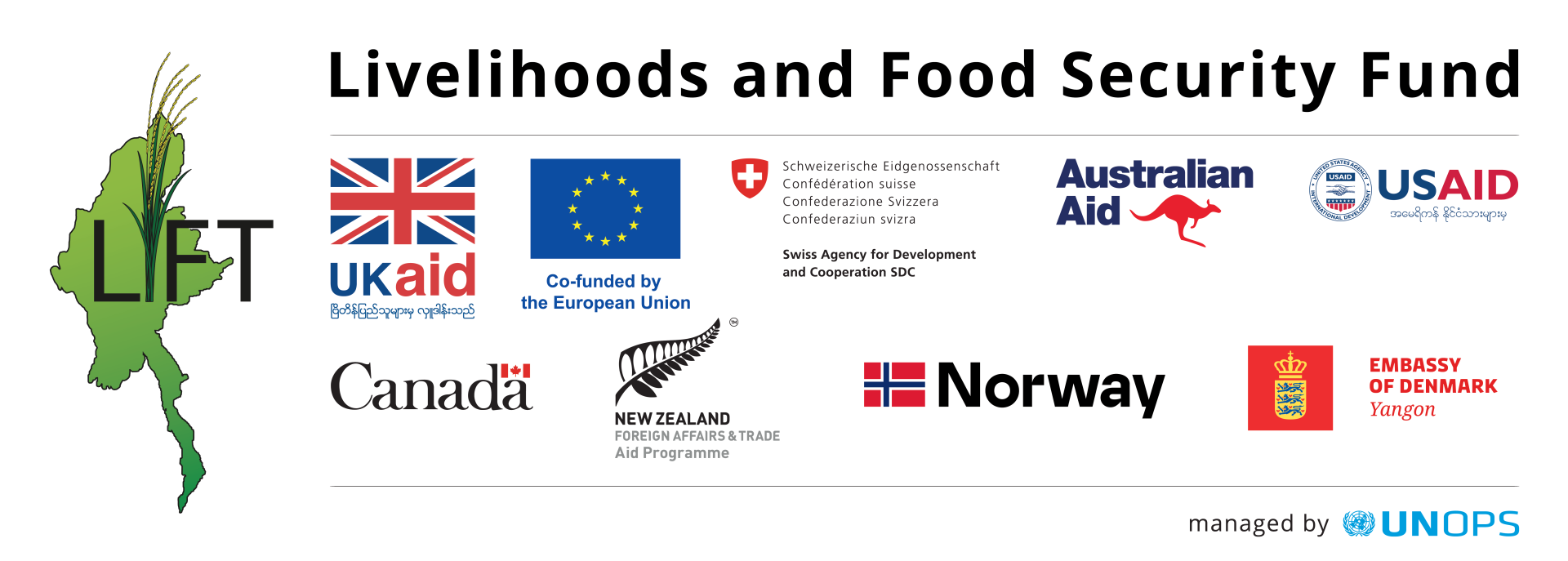
A new LIFT-funded project promoting agroforestry as a sustainable alternative to shifting cultivation in the Uplands of Myanmar has been received with enthusiasm. His Excellency U Win Tun, the Minister of Environmental Conservation and Forestry, officially launched the project, which will run until 2018, last Tuesday.
In his speech, HE U Win Tun thanked the World Agroforestry Centre's East and Central Asia regional programme (ICRAF ECA) which leads the project. This Agroforestry Project is sited in Shan and Chin states, both of which are characterised by mountainous landscapes prone to degradation from deforestation.
Shifting cultivation is the practice of clearing forest for the cultivation of crops. After a cropping period that can be as short as 1-2 years, the land is fallowed for up to ten years, allowing the forest to grow back. Not intrinsically bad, shifting cultivation is increasingly rare, due to the shrinking availability of land as well as government policies. Pressed to grow more food, villagers now usually clear forest permanently, often for
monoculture plantations of sugarcane or rubber. Allowing no natural regeneration and depriving the landscape of a diversity of trees, this change of land use harms livelihoods and ecosystems.
A promising and healthy alternative is the deliberate integration of trees that positively interact with crops and livestock on and around farms.
"Agroforestry is the ideal solution for Uplands," explains Dr Dietrich Schmidt-Vogt, the ICRAF researcher leading the project. "Agroforestry can drastically reduce the need for expensive chemical fertiliser and noxious pesticides while boosting yields and diversifying income sources."
Partners on the project include Myanmar NGOs - the Ecosystem Conservation and Community Development Initiative (ECCDI) and the Ar Yone Oo Social Development Association. "Their support proved invaluable in establishing the demonstration plots despite heavy monsoon floods," says ICRAF's Dr Dietrich Schmidt-Vogt. The main partner, however, is the University of Forestry (UOF) at Yezin, with Dr San Win at the helm, who helped with the project proposal and made sure to involve the Minister of Environmental Conservation and Forestry.The ceremony was followed by a workshop in which some 25 participants exchanged knowledge, provided feedback, and solidified relationships for future cooperation.
Communities have provided sites on which to demonstrate the benefits of agroforestry. The researchers hope to incorporate trees that fertilise the soil, such as Himalayan Alder, and to jointly search with villagers for alternative income sources. ICRAF has extensive expertise on non-timber forest products, such as mushrooms that can be gathered from fallow forest systems, boosting villagers' incomes. A feedback loop
between scientists, the NGOs and farmers helps determine the correct species and practices for local requirements.
HE Mr U Win Tun made no secret of his enthusiasm for agroforestry, requesting additional agroforestry demonstration sites to be set up around capital Nay Pyi Daw.
Dr Peter Mortimer, a soil scientist at ICRAF, is particularly excited about the support of the government. "Having strong backing on all levels is so important for this type of project, and we have a feeling that Myanmar and its people will prove great partners and an example for similar projects elsewhere."
While heavy flooding in the Chin state has complicated progress, trees are now ready to be planted and the first cropping cycle will start with the next wet season. Dr Jianchu Xu, Regional Coordinator for ICRAF in East and Central Asia concluded that, "a National Agroforestry Strategy and Action Plan is urgently needed for landscape restoration and livelihood development from mountains to coast in Myanmar."
---------------------------------------
For this project, LIFT is partnering with the World Agroforestry Centre, previously the International Centre for Research in Agroforestry (ICRAF), an autonomous, non-profit research organization whose vision is a rural transformation in the developing world as smallholder households increase their use of trees in agricultural landscapes to improve food security, nutrition, income, health, shelter, social cohesion, energy resources and environmental sustainability. The Centre generates science-based knowledge about the diverse roles that trees play in agricultural landscapes, and uses its research to advance policies and practices, and their implementation that benefit the poor and the environment. It aims to ensure that all this is achieved by enhancing the quality of its science work, increasing operational efficiency, building
and maintaining strong partnerships, accelerating the use and impact of its research, and promoting greater cohesion, interdependence and
alignment within the organization.


